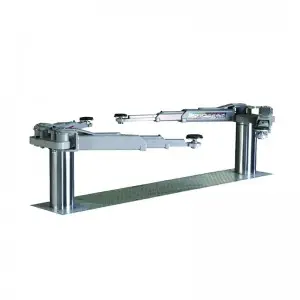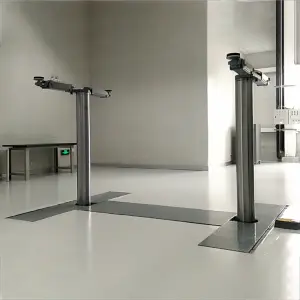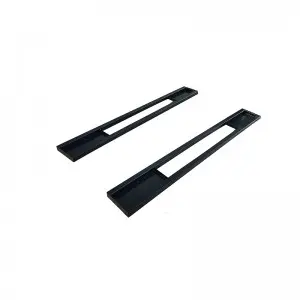****
Cylinders are geometric shapes that play a crucial role in various fields such as engineering, architecture, and manufacturing. Defined as a three-dimensional solid with two parallel circular bases connected by a curved surface, cylinders serve multiple purposes thanks to their unique properties. This article delves into the characteristics of cylinders, their applications across different industries, and their significance in modern design and construction.
Understanding the Properties of Cylinders
A cylinder is characterized by its height (h), radius (r), and volume (V). The volume of a cylinder can be calculated using the formula:
\[ V = πr²h \]
where π (pi) is approximately 3.14159. The surface area (A) of a cylinder consists of two circular bases and a curved surface and can be calculated using the formula:
\[ A = 2πr(r + h) \]
These mathematical properties make the cylinder an essential shape in calculus and geometry, as well as a practical design element in various applications.
One of the main features of a cylinder is its symmetry. Symmetrical shapes generally predict and analyze the distribution of forces and stress, making cylinders advantageous in structural applications. As a result, their strength and stability are well-suited for supporting weight and efficient fluid movement.
Applications of Cylinders in Engineering
In engineering, cylinders are commonly seen in various applications, including pipelines, pressure vessels, and storage tanks. The cylindrical shape offers strength against both internal and external pressures, making it suitable for transporting gases and liquids. For instance, gas cylinders used for storing compressed natural gas or welding gases are designed as cylinders because they can withstand high pressures, minimizing the risk of rupture.

Exploring the Fascinating World of Cylinders: Applications, Properties, and Their Significance in Engineering and Architecture
Moreover, in mechanical engineering, the concept of a cylinder extends into the realm of engines. Internal combustion engines utilize cylindrical chambers to house pistons, allowing for efficient energy conversion from fuel to mechanical work. The consistent and rotational motion generated by these cylinders is critical for power generation in vehicles.
Cylinders in Architecture

Exploring the Fascinating World of Cylinders: Applications, Properties, and Their Significance in Engineering and Architecture
In architecture, cylinders are often used for both aesthetic and structural purposes. Architectural designs frequently incorporate cylindrical forms to create visually striking buildings. For example, the Barbican Centre in London features a series of cylindrical towers that not only add artistic value but also serve functional roles. These structures can house residential units, offices, or cultural venues while offering strong load-bearing capabilities.
Additionally, iconic structures like water towers and silos use cylindrical designs for functionality and durability. The cylindrical shape promotes better water distribution and pressure maintenance, ensuring that storage needs are met effectively. Moreover, the design mimics nature, as many trees and organisms exhibit cylindrical forms, leading to a harmonious balance between the built environment and natural surroundings.
Importance of Cylinders in Manufacturing

Exploring the Fascinating World of Cylinders: Applications, Properties, and Their Significance in Engineering and Architecture
In the manufacturing sector, cylinders are pivotal elements in processes such as extrusion, molding, and machining. For example, in the extrusion process, materials like plastic and metal are forced through a cylindrical die, resulting in a product with a consistent cross-sectional shape. This method is essential in producing pipes, rods, and various custom profiles.
Further, in machining, the cylindrical shape is fundamental for producing parts with rotational symmetry, such as shafts and bearings. The precision manufacturing of these components ensures the reliability and efficiency of machines and systems across diverse industries.
Conclusion
Cylinders are more than just geometric shapes; they are vital components in engineering, architecture, and manufacturing that shape the world we live in. Their unique properties, such as strength, stability, and efficiency, allow for diverse applications ranging from everyday household items to towering skyscrapers. As technology evolves, the study and application of cylinder-related designs will continue to expand, promising innovation and advancements in various fields. Understanding the importance of cylinders not only enhances our appreciation of geometric shapes but also illuminates their fundamental role in shaping modern society.quick lift car lift
